You may be eligible for a pre-approved offer
Enter mobile and OTP | Check offer | No branch visit needed
Wondering if you’re eligible to open a financial account or apply for a personal loan instantly? Know Your Customer (KYC) is essential for verifying your identity when opening financial accounts. The vKYC full form is video KYC, a modern method authorised by the RBI to verify customers via video calls. This process uses a KYC application to collect documents like utility bills, driving licences, or passports, ensuring real-time identity verification and added security. Digitisation has simplified KYC, reducing paperwork and speeding up onboarding. Video KYC makes the verification process convenient, safe, and compliant with regulatory standards in the BFSI sector.
You can also check your loan eligibility using just your mobile number and OTP through a 100% online process, making borrowing quicker and hassle-free.
What is video KYC?
Video KYC, or video-based KYC, is a digital method that lets financial institutions verify customer identities through video calls. This remote process simplifies traditional KYC, making eKYC verification faster, more convenient, and cost-effective. It enhances customer experience, ensures regulatory compliance, reduces fraud risk, and removes location barriers. What is video KYC? It’s a secure, efficient solution transforming identity verification in modern financial services.
Why do you need KYC?
It is mandatory to meet all eligibility requirements of KYC verification before you may apply for a personal loan or any financial product. KYC includes documents such as Aadhaar, PAN card, passport, and voter’s ID. But, one of the key benefits of the video KYC facility is that you do not need to submit physical documents. All the documents can be submitted electronically in a simplified manner.
Read more: What is e-KYC
What are the benefits of video KYC?
In the modern financial landscape, the benefits of video KYC have become increasingly apparent as institutions seek more efficient and secure methods for customer identification. KYC through video call is revolutionizing the traditional Know Your Customer (KYC) process by integrating advanced technology to streamline verification and enhance the overall experience. Here, we explore the key advantages of adopting video KYC solutions.
- One of the key benefits of the video KYC facility is that you do not need to submit physical documents. All the documents can be submitted electronically in a simplified manner.
- Video KYC enables a quicker loan approval process, eliminating the need for a physical visit to the branch.
- This process enables faster loan approvals and disbursals.
- Security measures enhance fraud prevention, safeguarding both the lender and the borrower.
What are the requirements for video KYC?
The requirements for video KYC typically include a valid government-issued photo ID, proof of address, a stable internet connection, a smartphone or computer with a camera, and the customer's active participation in a real-time video call with a KYC agent. This method ensures secure and compliant customer onboarding while eliminating the need for in-person visits.
What are the steps for video KYC process?
The video based customer identification process is a relatively recent innovation in the realm of KYC that has gained popularity due to its convenience and accessibility. Below is a breakdown of the video KYC process.
- Pre-registration
Pre-registration is the first step of video KYC procedure. Customers who intend to participate in the video KYC procedure are required to register with the financial institution beforehand. This requires providing personal information such as their full name, address, and identification provided by the government. - Arranging the video call
Once the customer has registered, a time and date for the video call will be provided. Typically, the video conversation is done via a secure platform that protects the privacy of the customer's personal information. - Identity verification
During the video conference, the customer will be required to give additional personal information and papers for identity verification. This may involve answering questions regarding their personal background or submitting extra evidence, such as a utility bill or bank statement. - Record-keeping
The video call is recorded and stored as part of the KYC procedure. This is to ensure that a record of the verification process exists in the event of future disputes or governmental regulations. - Approval
After the video call has ended and the customer's identity has been confirmed, the financial institution will analyse the customer's information and decide whether to approve the application. If accepted, the customer will have access to the financial institution's services.
How video KYC works?
Video KYC, or video-based KYC, is a streamlined digital process for verifying customer identities. Here’s how it works: First, the customer initiates a video call with a representative or automated system through a secure platform. During this KYC video identification process, the customer presents their identification documents, such as a passport or driver’s license, in real-time. The system or representative then verifies these documents against the customer’s live image. Advanced video-based KYC solutions often incorporate biometric checks, such as facial recognition, to ensure authenticity. The entire interaction is recorded for compliance and auditing purposes. This method enhances security, speeds up the verification process, and eliminates the need for physical documentation, making it a convenient and efficient alternative to traditional KYC methods.
Difference between video KYC and traditional KYC
Banks, financial institutions, and all other businesses that deal with money are required to comply with KYC rules. Historically, organisations would use a manual Customer Identification Program (CIP) to verify the identity of new customers during the onboarding process. This procedure could take up to several weeks, causing clients to abandon it midway.
The video KYC process, also known as video-based KYC, serves as a modern digital alternative to traditional Know Your Customer (KYC) procedures. This method offers enhanced security, efficiency, and cost-effectiveness compared to standard practices. By leveraging video-based KYC, financial institutions can eliminate the need for paper documentation, significantly simplifying and accelerating the verification process. The real-time nature of video KYC ensures that identity checks are completed quickly and securely, reducing the risk of errors and fraud. Additionally, this digital approach improves accessibility for customers, allowing them to complete their identity verification from anywhere, thus making the overall experience more convenient and user-friendly.
Read more: What is e-KYC
Conclusion
In conclusion, video KYC represents a significant advancement in the field of customer verification, offering a modern and efficient alternative to traditional methods. By leveraging real-time video calls, video-based KYC provides enhanced security through live interactions and biometric checks, reducing the risk of fraud and identity theft. This method streamlines the verification process, making it faster and more convenient for customers who can complete their KYC requirements from anywhere, at any time. Additionally, video KYC helps financial institutions cut costs associated with physical documentation and manual processing while improving overall operational efficiency. With its ability to meet regulatory standards and provide a superior user experience, video KYC is transforming how institutions approach customer onboarding and identity verification. As digital solutions continue to evolve, video KYC stands out as a pivotal tool in ensuring secure and seamless customer interactions.
Read more: What is e-KYC
Key offerings: 3 loan types
Personal loan interest rate and applicable charges
Type of fee |
Applicable charges |
Rate of interest per annum |
10% to 31% p.a. |
Processing fees |
Up to 3.93% of the loan amount (inclusive of applicable taxes). |
Flexi Facility Charge |
Term Loan – Not applicable Flexi Loans –Up To Rs 1,999 To Up To Rs 18,999/- (Inclusive Of Applicable Taxes) |
Bounce charges |
Rs. 700 to Rs. 1,200/- per bounce “Bounce Charges” shall mean charges levied on each instance in the event of: (i) dishonour of any payment instrument irrespective of whether the customer subsequently makes the payment through an alternate mode or channel on the same day; and/or (ii) non-payment of instalment(s) on their respective due dates where any payment instrument is not registered/furnished; and/or (iii) rejection or failure of mandate registration by the customer’s bank. |
Part-prepayment charges |
Full Pre-payment: |
Penal charge |
Delay in payment of instalment(s) shall attract Penal Charge at the rate of up to 36% per annum per instalment from the respective due date until the date of receipt of the full instalment(s) amount. |
Stamp duty (as per respective state) |
Payable as per state laws and deducted upfront from loan amount. |
Annual maintenance charges |
Term Loan: Not applicable Flexi Term (Dropline) Loan: Up to 0.30% (Inclusive of applicable taxes) of the Dropline limit (as per the repayment schedule) on the date of levy of such charges.
Up to 0.30% (Inclusive Of Applicable Taxes) Of The Dropline Limit During Initial Tenure. Up to 0.30% (Inclusive Of Applicable Taxes) Of Dropline Limit During Subsequent Tenure |
Related articles
Disclaimer
Bajaj Finance Limited has the sole and absolute discretion, without assigning any reason to accept or reject any application. Terms and conditions apply*.
For customer support, call Personal Loan IVR: 7757 000 000









 Personal Loan
Personal Loan Check Eligibility
Check Eligibility Salaried Personal Loan
Salaried Personal Loan EMI Calculator
EMI Calculator Account Aggregator
Account Aggregator Credit Pulse Report
Credit Pulse Report
 Deals starting @99
Deals starting @99 Min. 50% off
Min. 50% off
 Bajaj Pay
Bajaj Pay Wallet to Bank
Wallet to Bank
 Easy EMI Loan
Easy EMI Loan Savings Offer
Savings Offer Smartphones
Smartphones Led TVs
Led TVs Washing Machines
Washing Machines Laptops
Laptops Refrigerators
Refrigerators Air Conditioner
Air Conditioner Air Coolers
Air Coolers
 Loan Against Shares
Loan Against Shares Loan Against Mutual Funds
Loan Against Mutual Funds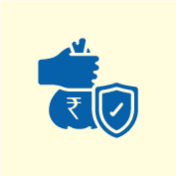 Loan Against Insurance Policy
Loan Against Insurance Policy ESOP Financing
ESOP Financing Easy EMI Loan
Easy EMI Loan Two-wheeler Loan
Two-wheeler Loan Loan for Lawyer
Loan for Lawyer Industrial Equipment Finance
Industrial Equipment Finance Industrial Equipment Balance Transfer
Industrial Equipment Balance Transfer Industrial Equipment Refinance
Industrial Equipment Refinance Personal Loan Branch Locator
Personal Loan Branch Locator Used Tractor Loan
Used Tractor Loan Loan Against Tractor
Loan Against Tractor Tractor Loan Balance Transfer
Tractor Loan Balance Transfer Flexi
Flexi View All
View All
 Two-wheeler Loan
Two-wheeler Loan Bike
Bike Scooter
Scooter Electric Vehicle
Electric Vehicle Best Sellers
Best Sellers Popular Brands
Popular Brands

 Trading Account
Trading Account Open Demat Account
Open Demat Account Margin Trading Financing
Margin Trading Financing Share Market
Share Market Invest in IPO
Invest in IPO All stocks
All stocks Top gainers
Top gainers Top losers
Top losers 52 week high
52 week high 52 week low
52 week low Loan against shares
Loan against shares
 Home Loan
Home Loan Transfer your existing Home loan
Transfer your existing Home loan Loan against Property
Loan against Property Home Loan for Salaried
Home Loan for Salaried Home loan for self employed
Home loan for self employed Loan Against Property Balance Transfer
Loan Against Property Balance Transfer Home Loan EMI Calculator
Home Loan EMI Calculator Home Loan eligibility calculator
Home Loan eligibility calculator Home Loan balance transfer
Home Loan balance transfer View All
View All
 Term Life Insurance
Term Life Insurance ULIP Plan
ULIP Plan Savings Plan
Savings Plan Family Insurance
Family Insurance Senior Citizen Health Insurance
Senior Citizen Health Insurance Critical Illness Insurance
Critical Illness Insurance Child Health Insurance
Child Health Insurance Pregnancy and Maternity Health Insurance
Pregnancy and Maternity Health Insurance Individual Health Insurance
Individual Health Insurance Low Income Health Insurance
Low Income Health Insurance Student Health Insurance
Student Health Insurance Group Health Insurance
Group Health Insurance Retirement Plans
Retirement Plans Child Plans
Child Plans Investment Plans
Investment Plans
 Business Loan
Business Loan Secured Business Loan
Secured Business Loan Loan against property
Loan against property Loans against property balance transfer
Loans against property balance transfer Loan against shares
Loan against shares Home Loan
Home Loan Loans against mutual funds
Loans against mutual funds Loan against bonds
Loan against bonds Loan against insurance policy
Loan against insurance policy
 Apply for Gold Loan
Apply for Gold Loan Transfer your Gold Loan with Us
Transfer your Gold Loan with Us Gold Loan Branch Locator
Gold Loan Branch Locator
 ULIP Plan
ULIP Plan Savings Plan
Savings Plan Retirement Plans
Retirement Plans Child Plans
Child Plans Free Demat Account
Free Demat Account Invest in Stocks
Invest in Stocks Invest in IPO
Invest in IPO Margin Trading Facility
Margin Trading Facility Fixed Deposit Branch Locator
Fixed Deposit Branch Locator
 Check your Credit Score
Check your Credit Score
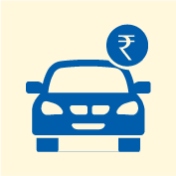 New Car Loan
New Car Loan Used Car Loan
Used Car Loan Loan Against Car
Loan Against Car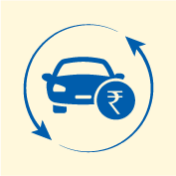 Car Loan Balance Transfer and Top-up
Car Loan Balance Transfer and Top-up My Garage
My Garage
 Get Bajaj Prime
Get Bajaj Prime
 Mobiles on EMI
Mobiles on EMI Electronics on EMI Offer
Electronics on EMI Offer  Iphone on EMI
Iphone on EMI LED TV on EMI
LED TV on EMI Refrigerator on EMI
Refrigerator on EMI Laptop on EMI
Laptop on EMI Kitchen appliances on EMI
Kitchen appliances on EMI Washing machines
Washing machines
 Personal Loan EMI Calculator
Personal Loan EMI Calculator Personal Loan Eligibility Calculator
Personal Loan Eligibility Calculator Home Loan EMI Calculator
Home Loan EMI Calculator Home Loan Eligibility Calculator
Home Loan Eligibility Calculator Good & Service Tax (GST) Calculator
Good & Service Tax (GST) Calculator Flexi Day Wise Interest Calculator
Flexi Day Wise Interest Calculator Flexi Transaction Calculator
Flexi Transaction Calculator Secured Business Loan Eligibility Calculator
Secured Business Loan Eligibility Calculator Fixed Deposits Interest Calculator
Fixed Deposits Interest Calculator Two wheeler Loan EMI Calculator
Two wheeler Loan EMI Calculator New Car Loan EMI Calculator
New Car Loan EMI Calculator Used Car Loan EMI Calculator
Used Car Loan EMI Calculator All Calculator
All Calculator Used Tractor Loan EMI Calculator
Used Tractor Loan EMI Calculator
 Hot Deals
Hot Deals Clearance Sale
Clearance Sale Kitchen Appliances
Kitchen Appliances Tyres
Tyres Camera & Accessories
Camera & Accessories Mattresses
Mattresses Furniture
Furniture Watches
Watches Music & Audio
Music & Audio Cycles
Cycles Mixer & Grinder
Mixer & Grinder Luggage & Travel
Luggage & Travel Fitness Equipment
Fitness Equipment Fans
Fans
 Personal Loan for Doctors
Personal Loan for Doctors Business loan for Doctors
Business loan for Doctors Home Loan
Home Loan Secured Business Loan
Secured Business Loan Loan against property
Loan against property Secured Business Loan Balance Transfer
Secured Business Loan Balance Transfer Loan against share
Loan against share Gold Loan
Gold Loan Medical Equipment Finance
Medical Equipment Finance
 Smart Hub
Smart Hub ITR Service
ITR Service Digi Sarkar
Digi Sarkar
 Savings Offer
Savings Offer Easy EMI
Easy EMI Offer World
Offer World 1 EMI OFF
1 EMI OFF New Launches
New Launches Zero Down Payment
Zero Down Payment Clearance Sale
Clearance Sale Bajaj Mall Sale
Bajaj Mall Sale
 Mobiles under ₹20,000
Mobiles under ₹20,000 Mobiles under ₹25,000
Mobiles under ₹25,000 Mobiles under ₹30,000
Mobiles under ₹30,000 Mobiles under ₹35,000
Mobiles under ₹35,000 Mobiles under ₹40,000
Mobiles under ₹40,000 Mobiles under ₹50,000
Mobiles under ₹50,000
 Articles
Articles
 Overdue Payments
Overdue Payments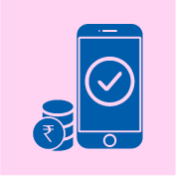 Other Payments
Other Payments
 Document Center
Document Center Bank details & Documents
Bank details & Documents Tax Invoice Certificate
Tax Invoice Certificate
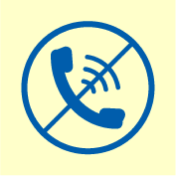 Do Not Call Service
Do Not Call Service
 Hamara Mall Orders
Hamara Mall Orders

 Fixed Deposit (IFA) Partner
Fixed Deposit (IFA) Partner Loan (DSA) Partner
Loan (DSA) Partner Debt Management Partner
Debt Management Partner EMI Network Partner
EMI Network Partner Became a Merchant
Became a Merchant Partner Sign-in
Partner Sign-in
 Trade directly with your Demat A/c
Trade directly with your Demat A/c ITR
ITR My Garage
My Garage
 Live Videos - Beta
Live Videos - Beta
 Savings Offer
Savings Offer Smartphones
Smartphones LED TVs
LED TVs Washing Machines
Washing Machines Laptops
Laptops Refrigerators
Refrigerators Air Conditioners
Air Conditioners Air Coolers
Air Coolers Water Purifiers
Water Purifiers Tablets
Tablets Kitchen Appliances
Kitchen Appliances Mattresses
Mattresses Furniture
Furniture Music and Audio
Music and Audio Cameras & Accessories
Cameras & Accessories Cycle
Cycle Watches
Watches Tyres
Tyres Luggage & Travel
Luggage & Travel Fitness Equipment
Fitness Equipment Tractor
Tractor Easy EMI Loan
Easy EMI Loan
 vivo Mobiles
vivo Mobiles OPPO Mobiles
OPPO Mobiles Xiaomi Mobiles
Xiaomi Mobiles Sony LED TVs
Sony LED TVs Samsung LED TVs
Samsung LED TVs LG LED TVs
LG LED TVs Haier LED TVs
Haier LED TVs Godrej Refrigerators
Godrej Refrigerators Voltas Washing Machines
Voltas Washing Machines
 New Tractor Loan
New Tractor Loan Used Tractor Loan
Used Tractor Loan Loan Against Tractor
Loan Against Tractor Tractor Loan Balance Transfer
Tractor Loan Balance Transfer
 New Car Loan
New Car Loan New Cars Under ₹10 Lakh
New Cars Under ₹10 Lakh New Cars – ₹10–₹15 Lakh
New Cars – ₹10–₹15 Lakh New Cars – ₹15–₹20 Lakh
New Cars – ₹15–₹20 Lakh New Cars – ₹20–₹25 Lakh
New Cars – ₹20–₹25 Lakh New Car Brands
New Car Brands Petrol – New Cars
Petrol – New Cars Diesel – New Cars
Diesel – New Cars Electric – New Cars
Electric – New Cars CNG – New Cars
CNG – New Cars Hybrid – New Cars
Hybrid – New Cars











